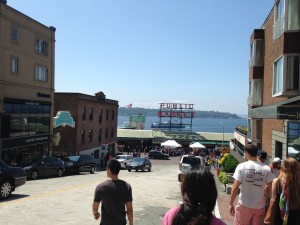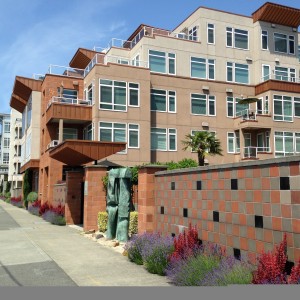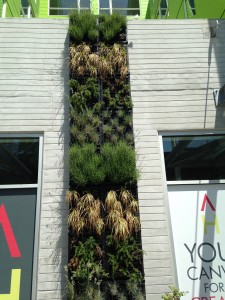It appears the American Planning Association may break all its attendance records at its annual National Planning Conference next month in Seattle. The last previous record of about 7,000 was also set in Seattle in 1999, so there must be something about the city that both supports and attracts urban planners and those interested in the subject. Perhaps it is the whole Pacific Northwest that sets a tone in favor of well-planned communities; Portland, Oregon, for example, has long been regarded as uniquely progressive in this regard. But Seattle and King County, which includes the city, have been no slouches in embracing forward-looking initiatives aimed at achieving sustainable, environmentally friendly communities. Former King County Executive Ron Sims, who led many of those efforts, will be speaking at the conference, as will Julián Castro, the Secretary of Housing and Urban Development (HUD). Sims served with HUD as Deputy Secretary under Secretary Shaun Donovan before returning to Seattle to lead the Washington Health Benefit Exchange Board.
In planning for a plenary presentation at another conference in July, the Natural Hazards Workshop, as well as for an article assignment for Planning, the APA monthly magazine, later this year, I have been assembling data on some important changes in the interests of American planners over time as expressed in conference session attendance. I have been around long enough to recall APA conferences 20 years ago when it was difficult to muster significant attendance at sessions addressing issues connected with natural hazards and disaster recovery, and sessions addressing issues related to climate change did not exist. This year, in Seattle, APA will host an entire track of 18 sessions devoted to Planning and Climate Change, and my guess is that most of them will be well attended. And that is without counting other sessions addressing disasters without the climate change component as part of the subject matter. I will be participating in some of both, but speaking at one in the very first round on Saturday morning, April 18, on “Climate Change Projections and Community Planning.” The audience can expect a rather heady deep dive into the question of how best we can integrate data generated by the science of climate change into hazard mitigation and other community plans.
This is of no small significance to communities seeking federal hazard mitigation assistance (HMA) because the Federal Emergency Management Agency’s new FY 2015 guidance for its grant programs now includes a section now includes tools and resources for climate change and resiliency considerations. Moreover, a new presidential executive order makes inclusion of climate change factors a preferred method for assessing flood risk under the Federal Flood Risk Management Standard, for which public comments are due by April 6. To encourage consideration of these factors, FEMA has incorporated sea level rise into its HMA cost-benefit analysis tool. This is a major step.
Climate change also has implications in planning for drought and urban heat emergencies, and I will serve also on a panel organized by the National Oceanic and Atmospheric Administration’s Climate Program Office on “Coping with Heat and Drought,” which will include some valuable integration of the impacts of such challenges on public health. Elsewhere in the conference, my Washington-based APA colleague, Anna Ricklin, manager of APA’s Planning and Community Health Center, will be busy with sessions addressing the relationships of urban design and public health, such as fostering physically active communities, another vital frontier in the field of urban planning.
All of this makes an ecologically aware city like Seattle a fascinating laboratory in which to conduct mobile workshops and other conference events for knowledge-hungry attendees. At this point, I will commend fellow practitioners of my own professional for their intellectual acuity and curiosity. I have attended and spoken at many kinds of conferences over the years, but I have seen few at which the professionals involved show such enthusiasm for new knowledge. They attend the sessions, they ask questions with a passion, and otherwise demonstrate that they truly care about the work they perform in communities on a daily basis, whether as local, state, or federal government staff, or as consultants, land-use attorneys, or academic researchers. (The largest portion of APA members is and long has been employed in local government in some capacity.)

Let’s see, the last time I visited the Pike Street Market, I came home with a gel ice-packed 7-lb. steelhead salmon, promptly consumed that weekend by family friends in a backyard cookout.
For all the fascination with cutting-edge topics like climate change and public health, however, there will remain the traditional hard-core topics of modern urban planning such as zoning, economic development, transportation, and capital improvements programming, for these are the tools that must absorb and focus many of these emerging concerns into a means of addressing them through regulations, incentives, other public policies and better design practices. The overarching goal is to create livable and lasting, sustainable, resilient communities.
Jim Schwab


